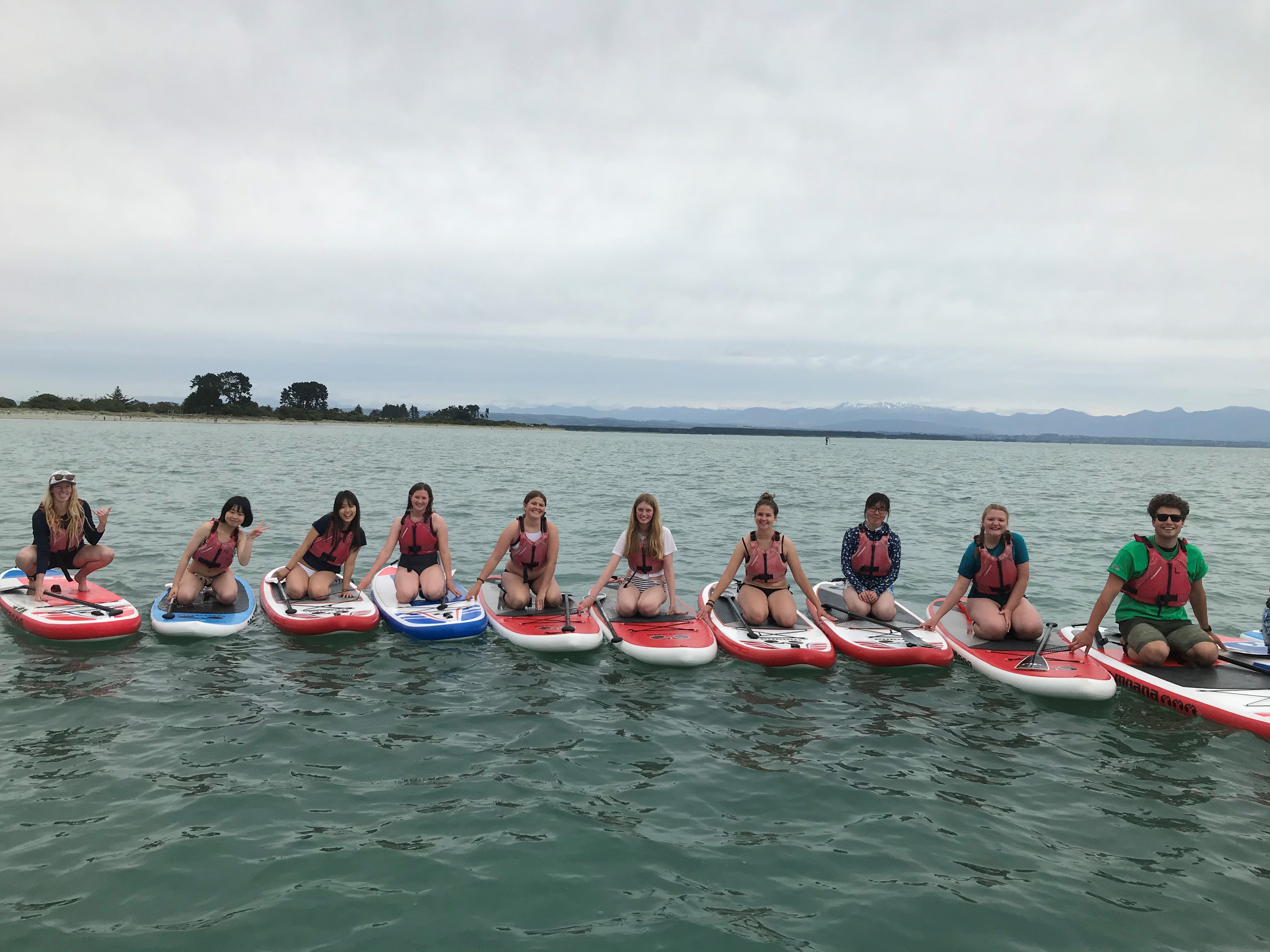Sport Tasman delivers mana-enhancing projects for rangatahi


Paddle boarding groups are just one of the of the ways Sport Tasman is encouraging youth to get active in the region. Photo: Supplied.
As youth enjoyment of sport falls to new lows, a newly-launched initiative looks to break down the barriers for young people to be physically active while also increasing participation.
While physical activity offers many benefits for young people, rangatahi aren’t as active as they used to be and Sport Tasman aims to be the change makers in the space by delivering mana-enhancing projects in the region that give young people a voice in programme delivery and alignment with their values and interests.
According to a recent Sport New Zealand report, weekly participation for youth aged 12-17 has decreased by three per cent from 2021 to 2022 and six per cent from pre-Covid levels.
The decline in participation is prominent among females aged 12-14, while interest and enjoyment levels among rangatahi are diminishing across the board. The report also found in 2022 that the number of youth who said they enjoy playing sports reached an all-time low of 79 per cent.
Sport Tasman’s vision is to remove the barriers and provide equitable opportunities for rangatahi to participate in sport and active recreation across Te Tau Ihu and Kaikōura through its unique Regional Active Recreation Advisors (RARA) projects.
They have embarked on a three-year strategic partnership with Rātā Foundation and Sport New Zealand Ihi Aotearoa, designed to support targeted populations of rangatahi - including Māori, Pasifika, kōhine (teenage girls) and former refugees in the Nelson, Tasman, Kaikōura, and Marlborough regions - to increase engagement and wellbeing and remove barriers that make participation challenging for young people.
Sport Tasman’s General Manager of Community Outcomes Lesley McIntosh says existing barriers to participation include time, cost, transport, and general awareness of the recreation programmes available.
“There is also a lack of youth input into the programmes being offered and little alignment with their values or interests,” she says.
Sport Tasman’s holistic programme aims to address barriers by encouraging rangatahi to connect with Māori culture and the natural environment.
“We base our activity around Te Whare Tapa Whā, which is the four pillars of wellbeing, where active recreation isn’t the be-all and end-all but adds value to existing programmes or enhances the wellbeing and mana of rangatahi,” says Lesley.
“We don’t offer active recreation in isolation. We aim to link it with the youths’ values, whether that be around the environment or Māori culture.
“When you bring in those values, you’re starting to break down some barriers that not only enable them but encourage rangatahi to participate.”
In the first year of the project, Sport Tasman has collaborated with 49 organisations, over half of whom have shown increased capability to engage rangatahi through insights, co-design and adopting principles informed by a Te Ao Māori world-view, while three quarters of the opportunities provided were co-designed alongside rangatahi.
“Sport Tasman has embraced the fact that not all young people enjoy, or want to participate in, competitive sport,” says Sport New Zealand Ihi Aotearoa Active Recreation lead Fran McEwen.
